Act On The Facts - Week Four (See below for Week Three, Two & One)
18% of women in Canada experience chronic pain.

Meana, M., Cho, R., & DesMeules, M. (2004). Chronic pain: the extra burden on Canadian women. BMC women's health, 4(1), S17
Women with disabilities report that they have limited options in terms of contraceptives, as practitioners are surprised that they are sexually active and fail to ask about contraception and STIs.
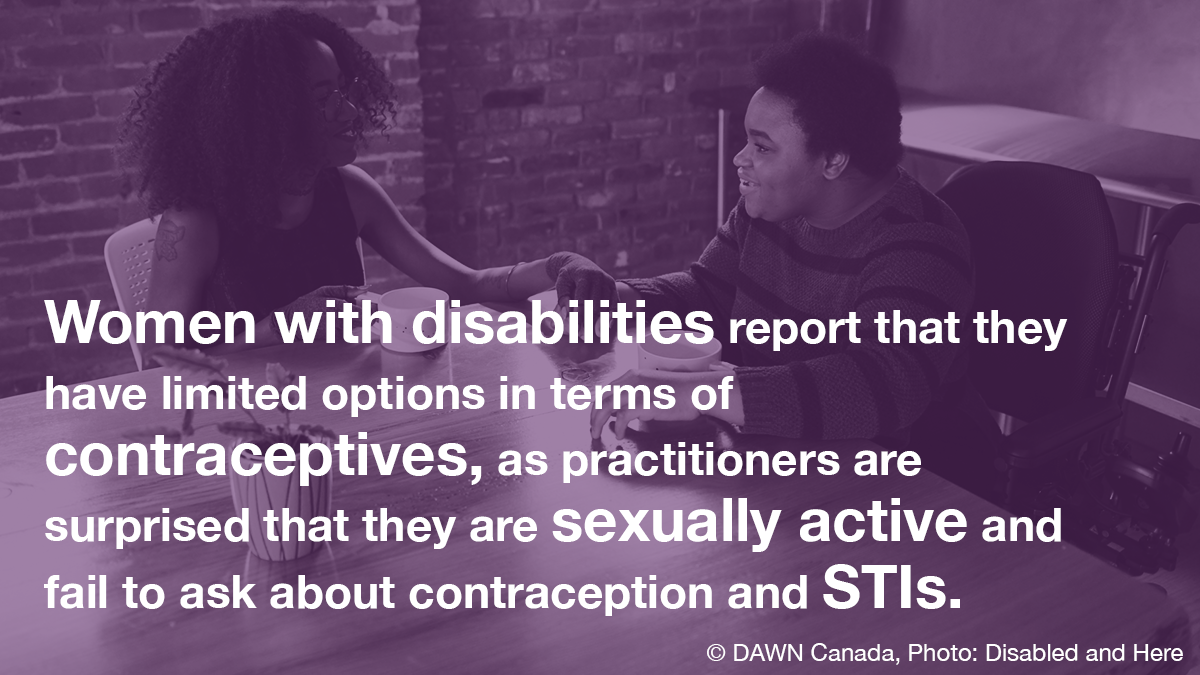
Becker, H., Stuifbergen, A., & Tinkle, M. (1997). Reproductive health care experiences of women with physical disabilities: a qualitative study. Archives of physical medicine and rehabilitation, 78(12), S26-S33.
32% of people with disabilities report facing physical barriers when accessing healthcare facilities. Since women with multiple chronic conditions are higher users of primary care, these barriers impact them at higher rates.
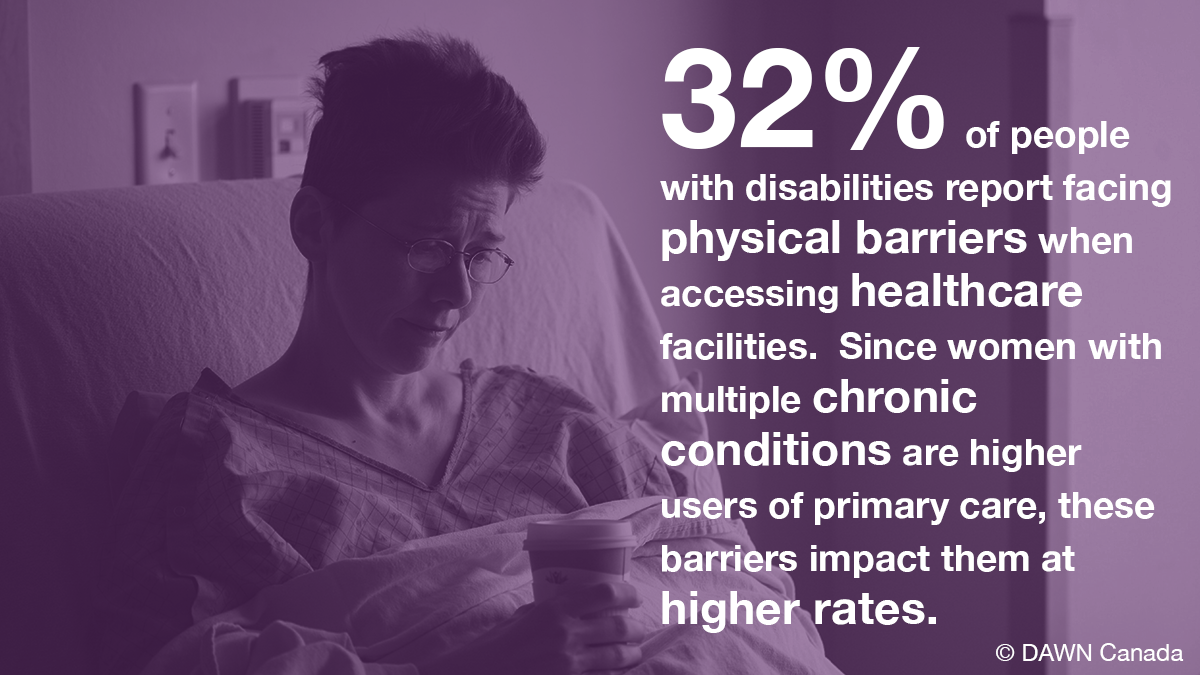
McColl, M. (2011) Complex-vulnerable patients in primary care: Highlights of a ten-year program of research on disability and primary care.
48.6% of pregnant women with intellectual disabilities are under the age of 25, compared to 18.2% of women without disabilities.
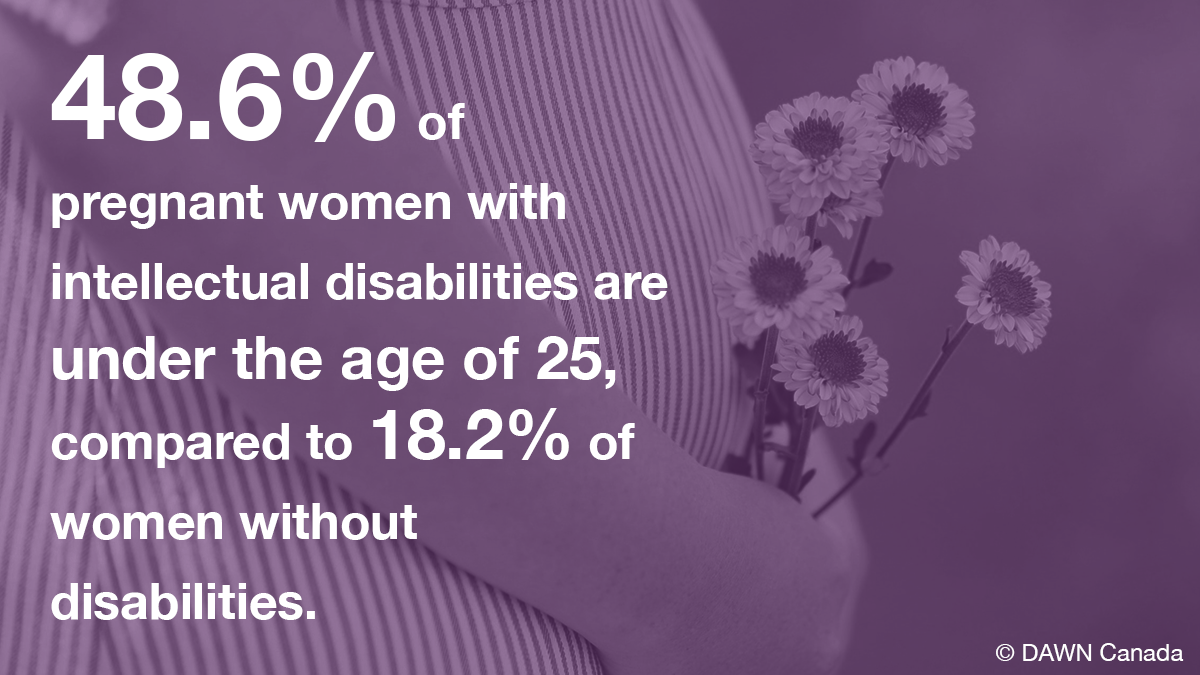
Brown, H. K., Ray, J. G., Liu, N., Lunsky, Y., & Vigod, S. N. (2018). Rapid repeat pregnancy among women with intellectual and developmental disabilities: a population-based cohort study. CMAJ, 190(32), E949-E956.
Act On The Facts - Week Three (See below for Week Two & One)
People most affected by the lack of affordable housing are women leaving violent partners, especially those who are poor, have a disability, are Indigenous, or living in rural and remote areas
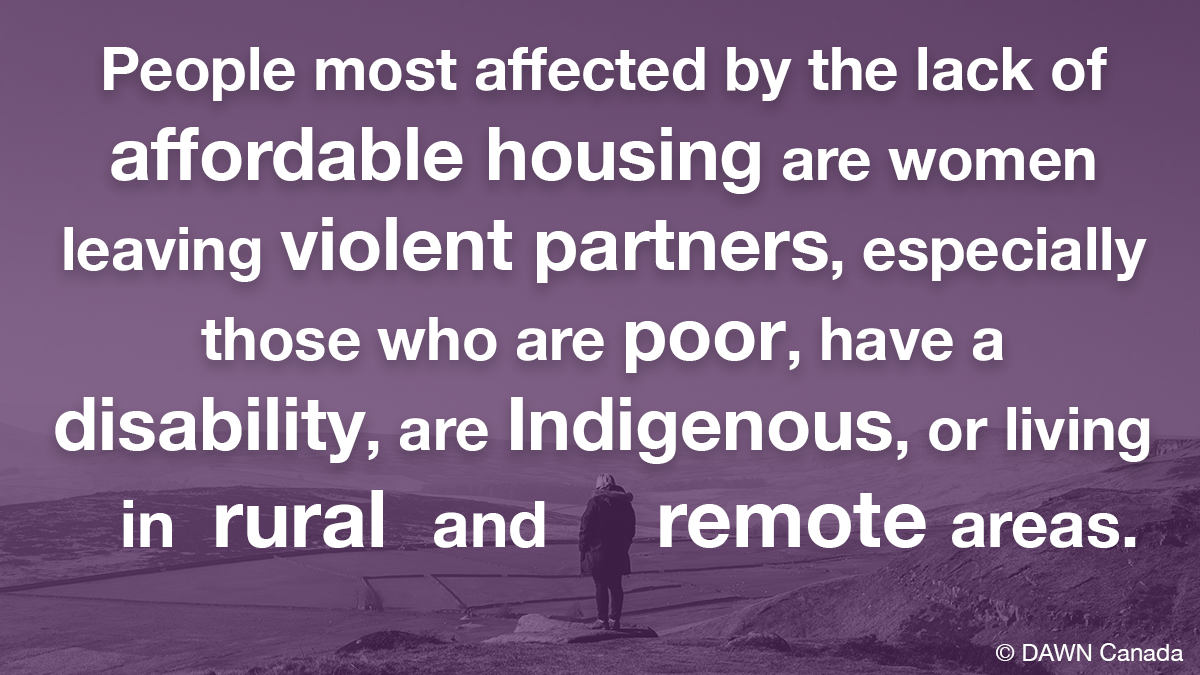
Canadian Network Women`s Shelters and Transition Houses (CNWSTH). (2014, Oct 23). “Second Stage Shelters for Women Fleeing Violence: Briefing Document”; Jategonkar and Ponic (2011); Noble (2015).
Women with disabilities are more likely than men with disabilities to spend over 50% of their before-tax income on housing. This puts women with disabilities at higher risk of eviction.
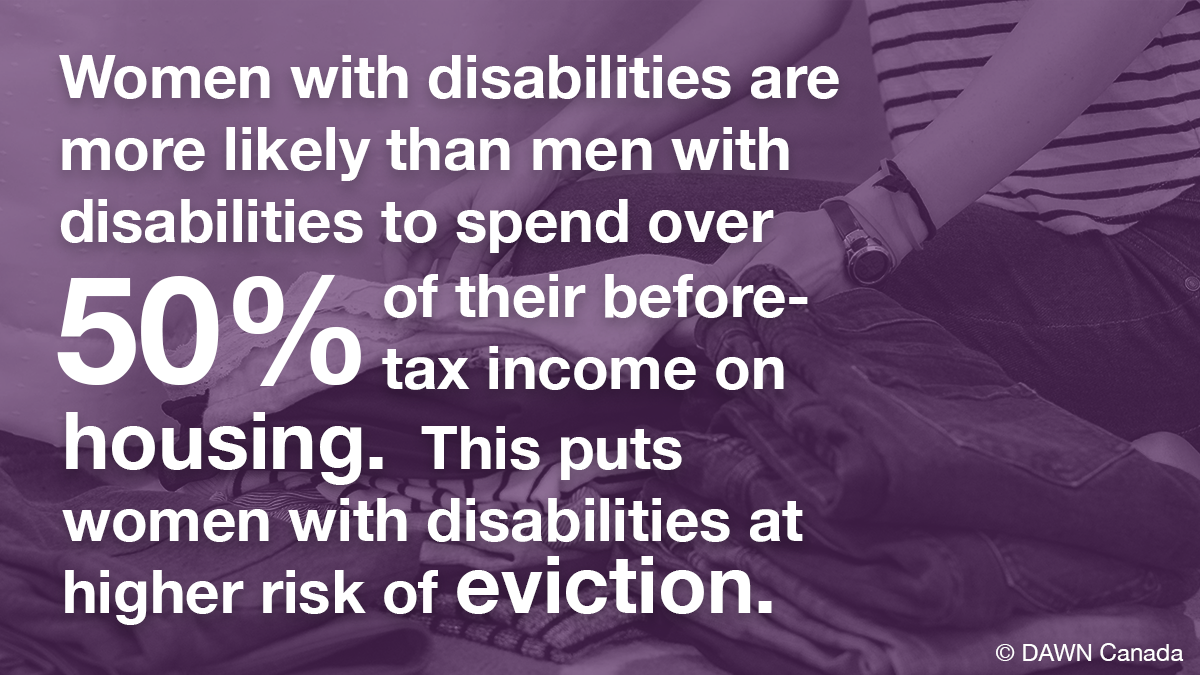
Rajan, D. (2018) women with Disabilities housing Brief. Available at: https://irisinstitute.ca/2018/10/11/women-with-disabilities-and-housing-research-brief
People with disabilities remain more likely to experience “hidden homelessness” in Canada (having access to some kind of accommodation but no prospects for long-term stable housing). 24% of women in Canada have a disability.

Rodrigue, S. (2016) Insights on Canadian Society Hidden homelessness in Canada. Statistics Canada. Available at: https://www150.statcan.gc.ca/n1/pub/75-006-x/2016001/article/14678-eng.htm
Stuart Morris, Gail Fawcett, Laurent Brisebois, Jeffrey Hughes, Canadian Survey on Disability Reports , A demographic, employment and income profile of Canadians with disabilities aged 15 years and over, 2017, https://www150.statcan.gc.ca/n1/pub/89-654-x/89-654-x2018002-eng.htm
Women with disabilities are 2x as likely as women without disabilities to report experiencing emotional, financial, physical or sexual violence or abuse committed by a current or former partner. Interpersonal violence remains the most common pathway to homelessness for women and girls.

Violent Victimization of Women with Disabilities, http://www.statcan.gc.ca/pub/85-002-x/2018001/article/54910-eng.htm
Van Berkum, A., & Oudshoorn, A. (2015). Best Practice Guideline for Ending Women's and Girl's Homelessness. All Our Sisters.
Over 40% of homeless women have a traumatic brain injury.
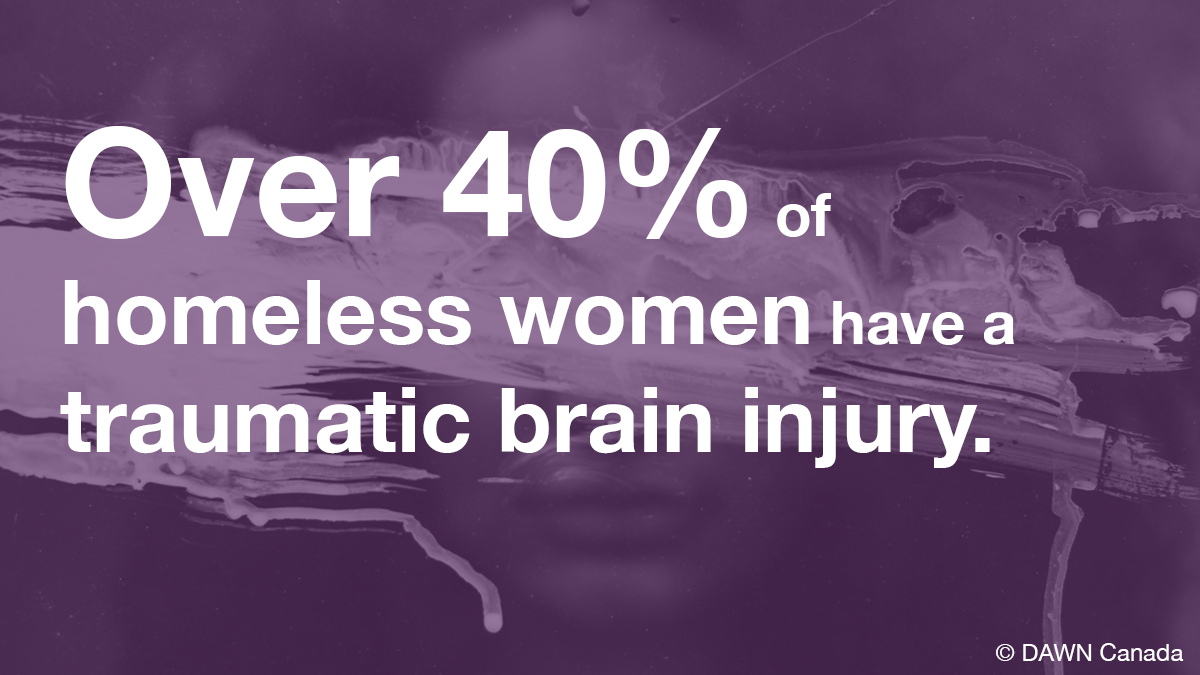
S.W. Hwang, A. Colantonio, S. Chiu, G. Tolomiczenko, A. Kiss, L. Cowan, D.A. Redelmeier, & W. Levinson 2.6 Traumatic Brain Injury in the Homeless Population: A Toronto Study
Act On The Facts - Week Two (See below for Week One)
In Canada, 46% of women who report having been homeless also have a disability.
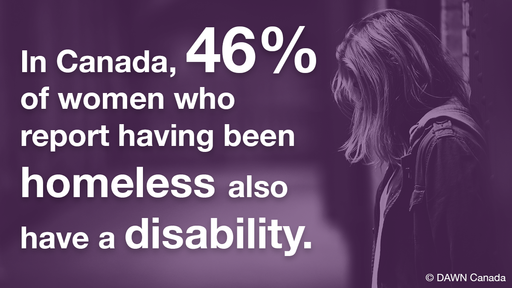
Cotter, A. (2018) Violence and Victimization of Women with Disabilities. Statistics Canada. Available at: http://www.statcan.gc.ca/pub/85-002-x/2018001/article/54910-eng.pdf
62% of food bank clients reported having a disability or serious illness in 2018.
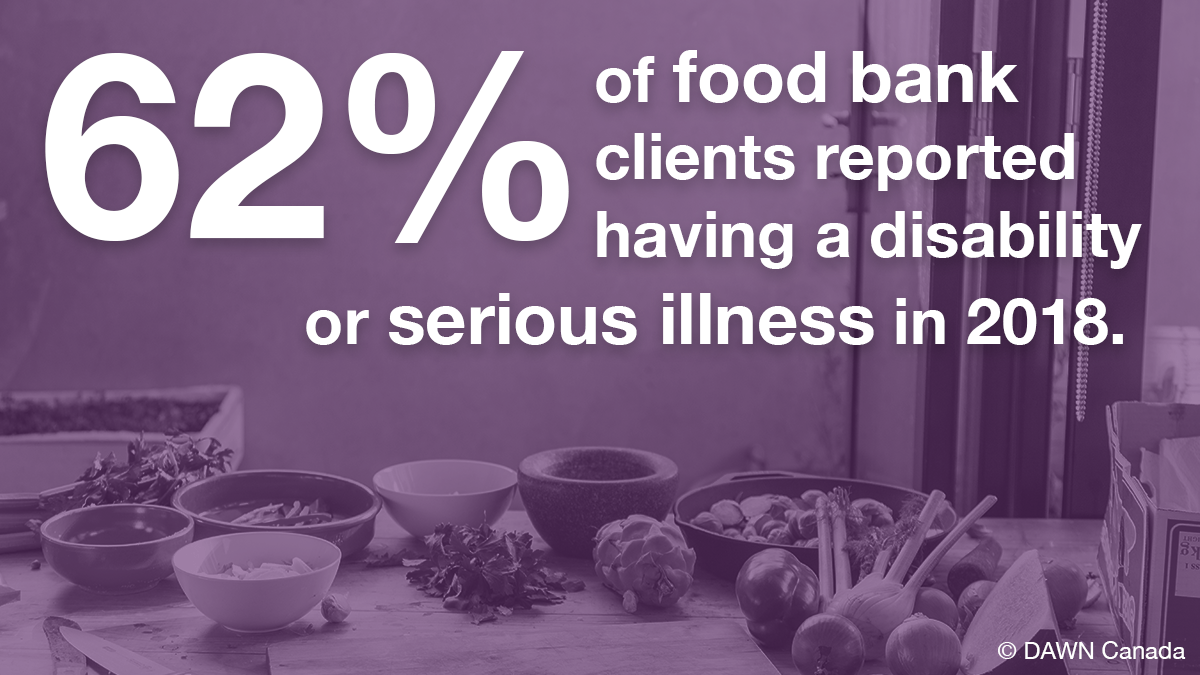
Borowko, W. (2008). Food insecurity among working-age Canadians with disabilities (Doctoral dissertation, Master of Public Policy Program-Simon Fraser University)
Among Canadian women, those from racialized groups, those with disabilities, Indigenous women, immigrant and refugee women remain significantly disadvantaged with respect to labour market participation.

House of Commons Report on the Standing Committee on the Status of Women (2009) Towards Improving Access to EI Benefits for Women in Canada. Available at: http://www.ourcommons.ca/Content/Committee/402/FEWO/Reports/RP3912853/feworp06/
feworp06-e.pdf
12.6% of women with disabilities share that they were refused a job in the last 5 years because of their disability.

Burlock, A. ( 2017) Women with Disabilities. Women in Canada: a Gender Based Statistical Report. Statistics Canada. Available at: https://www.statcan.gc.ca/pub/89-503-x/2015001/article/14695-eng.htm
Act On The Facts - Week One
24% of women in Canada have a disability
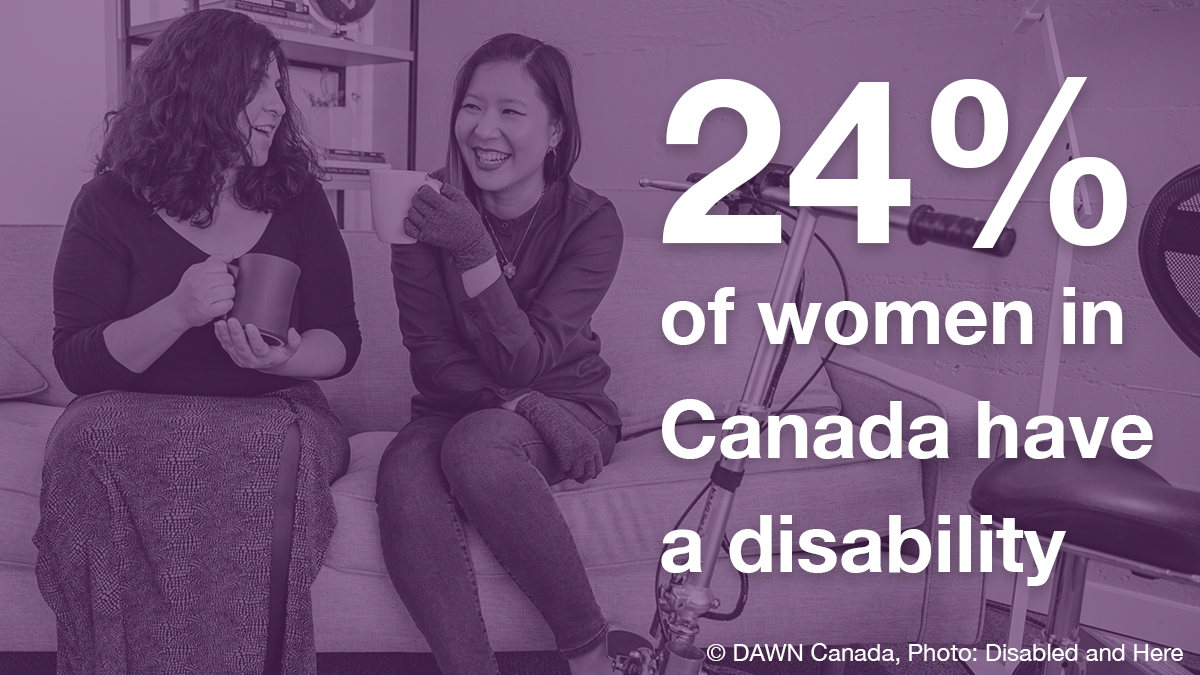
Stuart Morris, Gail Fawcett, Laurent Brisebois, Jeffrey Hughes, Canadian Survey on Disability Reports, A demographic, employment and income profile of Canadians with disabilities aged 15 years and over, 2017, https://www150.statcan.gc.ca/n1/pub/89-654-x/89-654-x2018002-eng.htm
Women with disabilities are twice as likely as those who do not have a disability to be the victim of violent crimes.
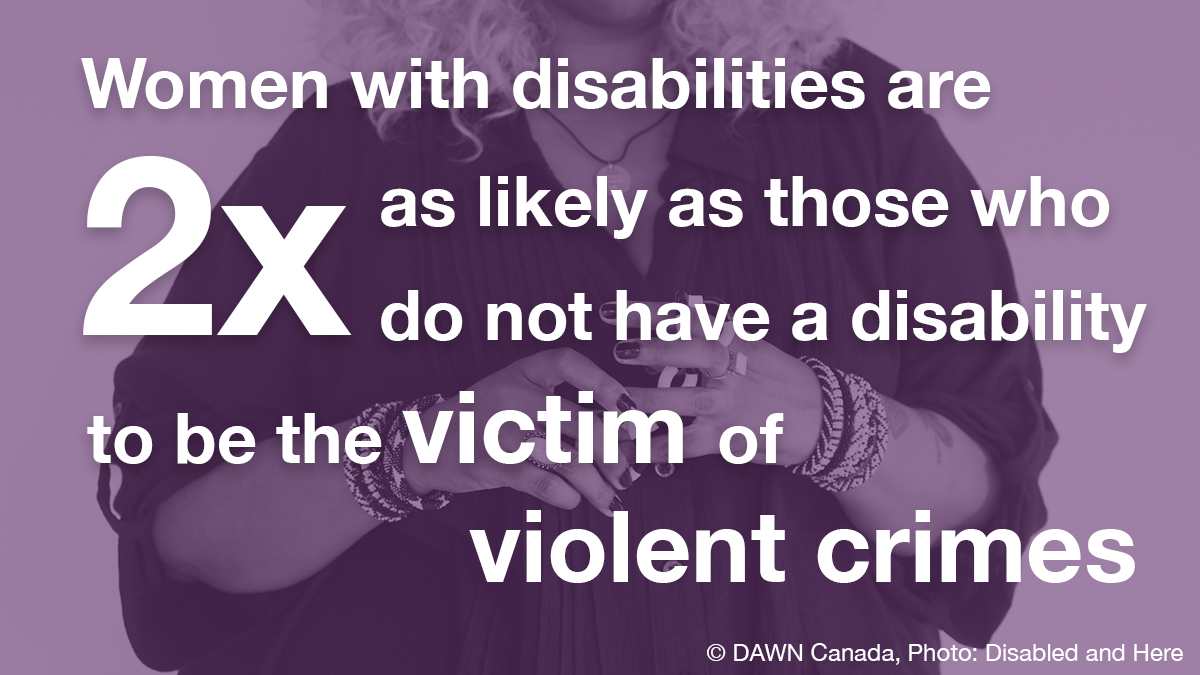
Women with disabilities are twice as likely as those who do not have a disability to be the victim of violent crimes. There are disproportionately low rates of prosecution and conviction in cases of sexual assault of older women in institutional settings - in a review of a 120 cases, law enforcement was notified in 96% of these cases, yet only 55% resulted in charges and only 25% resulted in an assailant being found guilty”
Cotter, A. (2018) Violence and Victimization of Women with Disabilities. Statistics Canada. Available at: http://www.statcan.gc.ca/pub/85-002-x/2018001/article/54910-eng.pdf
Grant, I., & Benedet, J. (2016). The Sexual Assault of Older Women: Criminal Justice Responses in Canada. McGill Law Journal/Revue de droit de McGill, 62(1), 41-78.
The risk of women with disabilities experiencing violence increases if they are young, racialized, Indigenous, LGBTQI2S, immigrants, migrant workers, non-status migrants, or those who live rurally.
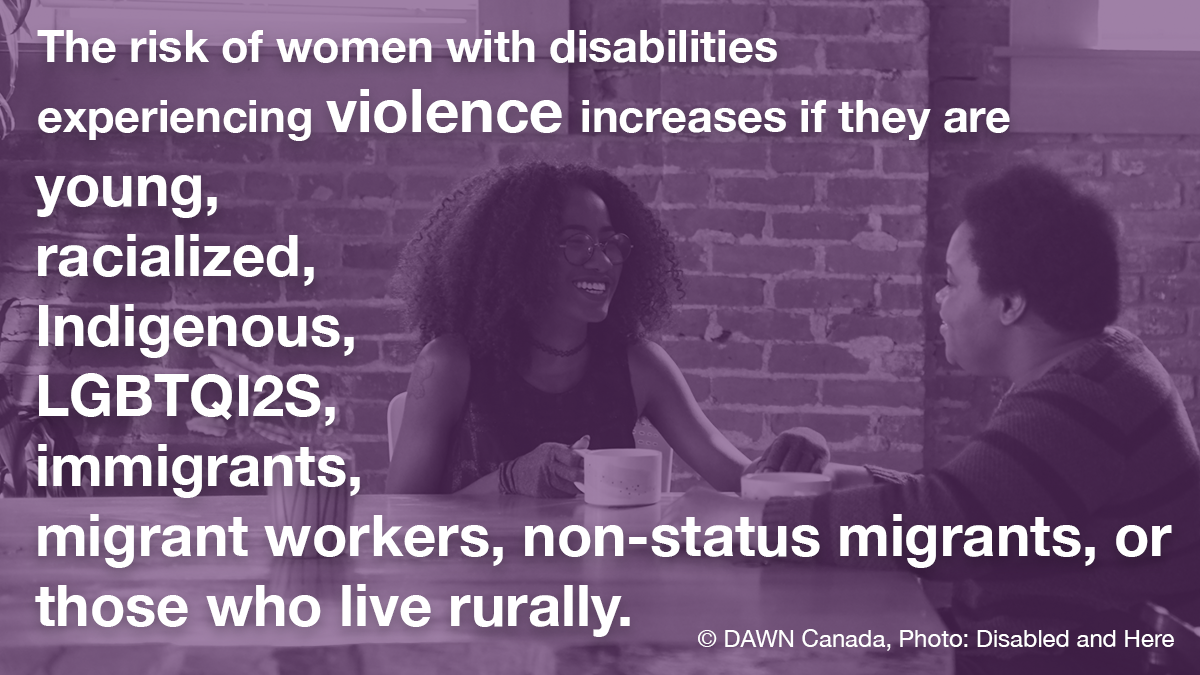
Congrès du travail du Canada. Présentation destinée à Emploi et Développement social Canada au sujet de la législation en matière d’accessibilité pour les Canadiens et les Canadiennes qui ont des incapacités, 2017 (en anglais). http://documents.clc-ctc.ca/whr/DISAB-Rights/ODILegisltion/SEP-CanadiansWithDisabilitiesAct-Submission-ElizabethKwan-2017-02-24.pdf
Girls with disabilities are twice as likely to be exposed to violence as a result of the combined vulnerability of their young age and disability
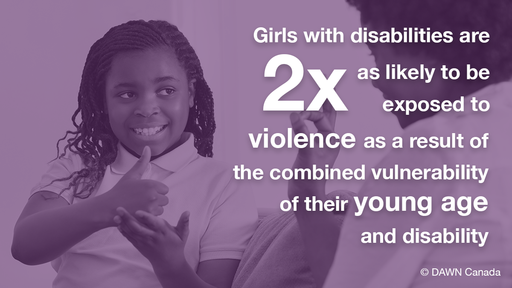
There are disproportionately low rates of prosecution and conviction in cases of sexual assault of older women in institutional settings
in a review of a 120 cases, law enforcement was notified in 96% of these cases, yet only 55% resulted in charges and only 25% resulted in an assailant being found guilty.[1] In another study looking at sexual assault in nursing homes, only 5% of these cases were prosecuted.
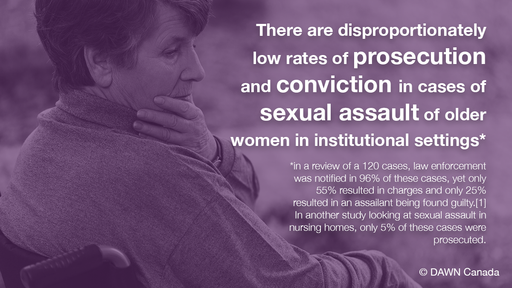
Leeb T.R , Bitsko R.H, Merrick M.T & Armour B.S (2012) Does Childhood Disability Increase Risk for Child Abuse and Neglect?, Journal of Mental Health Research in Intellectual Disabilities, 4-31, page 5.
